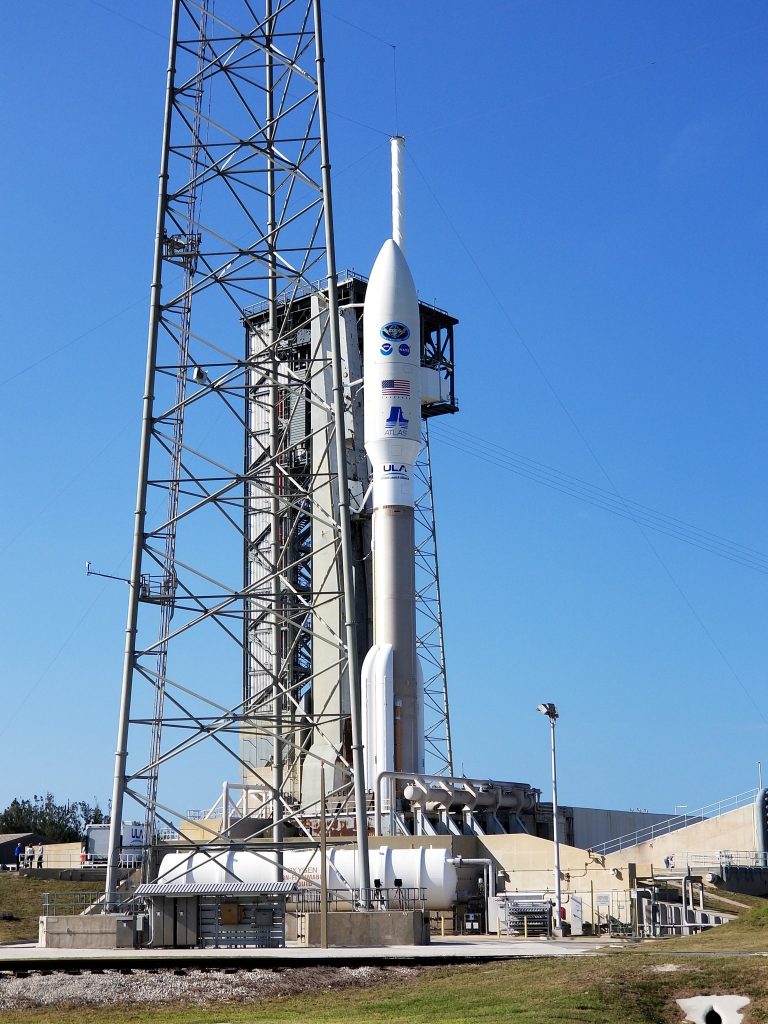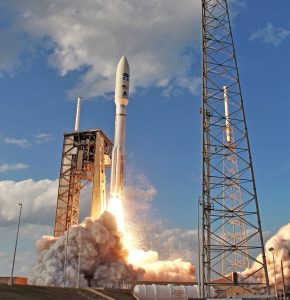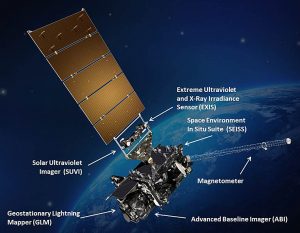
A new weather satellite launched in February, the GOES-S, is still showing problems with its on-board cooling system, impairing its use; a thorough analysis triggered by the investigation has found that the GOES-16, which is in operation as GOES-East today, apparently has a similar issue, although its performance isn’t hampered like it is with GOES-17. In a briefing call held with reporters today (July 24), Dr. Steve Volz, Director, NOAA’s Satellite & Information Service, and Pam Sullivan, Director, GOES-R System Program, updated the status of the impaired satellite.
A United Launch Alliance (ULA) Atlas V rocket brought the GOES-S satellite to space for NASA and NOAA on the evening of March 1. The picture-perfect launch brought the latest satellite in the Geostationary Operational Environmental Satellite (GOES)-R series of satellites to orbit. After reaching orbit, the GOES-S was re-named to GOES-17. After a check-out period that was to extend through the spring, GOES-17 was to go into service as GOES-West and provide the Pacific and western United States with coverage to compliment GOES-East, which is doing the same for the Atlantic and eastern United States.

During this check-out phase of the satellite before it became operational, program specialists identified a significant malfunction with the Advanced Baseline Imager (ABI). The issue affects 13 of the infrared and near-infrared channels on the instrument, which has a total of 16 channels. Experts from NOAA, NASA, the ABI contractor team, and the industry have been investigating the issue and pursuing multiple courses of possible corrective actions.
In today’s update, Dr. Volz said those experts were split into two teams, one focussed on understanding the issue and capacity of the satellite, the other on the overall work of the satellite to make it as operational as possible. Sullivan said based on those efforts, “13 of 16 ABI channels will be available 24 hours a day and the other 3 for 20 hours/day” during the satellite’s cool season, while “10 channels will be available 24 hours a day, and 6 most of the day” during the satellite’s warm season. The cool season has passed and the warm season arrives in September; at that time, Sullivan said the teams will be able to confirm their assessment of how much impact the cooling system impairment will have in the season the satellite encounters the most warming from the sun.
During the analysis to determine what went wrong with GOES-17, the team also examined the performance of GOES-East (-16), and found a similar cooling issue. Sullivan said, “In a detailed analysis of GOES-17, we saw GOES-16 reduced performance.” However, Sullivan added that the GOES-East is functioning and that there’s “no sign of changing performance now.”
The problem has to do with the plumbing for the cooling system that keeps the imager’s infrared detectors sufficiently chilled. Propylene is to pass through a pipe around the ABI to keep it cool, much like antifreeze works in an automobile’s radiator. Sullivan said teams have narrowed down the problem to the pipe, saying that excess gas or foreign object debris in the pipe are the lead potential causes being explored. Sullivan also said they’re exploring whether or not there’s actual mechanical damage to the pipe.
“No doubt these cooling system problems are disappointing, ” said Dr. Volz. “We will figure it out so it doesn’t happen again on future satellites.” GOES-T, a third identical weather satellite to the GOES-R and GOES-S, is currently being tested and readied for an eventual launch. Sullivan said until the issue identified with these satellites in space is found and resolved, both GOES-T and future GOES-U will not launch.

NOAA’s operational geostationary constellation — GOES-16, operating as GOES-East, GOES-15, operating as GOES-West and GOES-14, operating as the on-orbit spare — is healthy and monitoring weather across the nation each day, so there is no immediate impact from this performance issue. However, having the latest technology not operational will be a blow to meteorologists and forecast models that were depending on high-resolution imagery and data to improve forecasts.
For back-up coverage of the impaired GOES-17, Sullivan said other assets in space will be used for coverage for the Pacific. “HIMAWARI, which is stationed over Japan, but observes a wide part of the Pacific, and polar satellites, which can assist with coverage of Alaska” were two examples Sullivan shared of how other satellites currently in orbit can provide meteorologists with data and imagery of the area impacted by GOES-17’s area of focus can be supplemented by other functioning weather satellites in space. The impaired GOES-17 is still slated to become operational as GOES-West later this year.